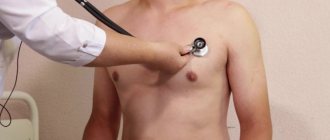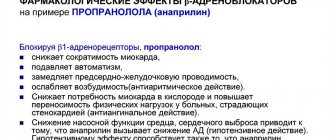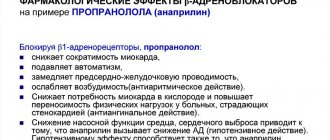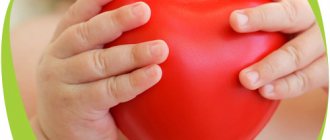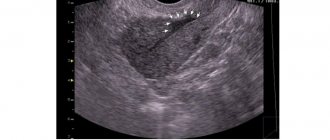Updated June 26, 2020 On the one hand, sport has a positive effect on the human body. But on the other hand, this or that sport also has adverse consequences. Torn backs or torn ligaments in powerlifters, consequences of blows in boxers, hormonal imbalance in bodybuilders. Correct diagnosis and treatment in Germany - Emex-Medical GmbH will allow you to cure any of the dangerous injuries. It is always worth establishing a risk factor, preventing the development of diseases, eliminating the presence of complications, and with the help of Emex-Medical Gmbh you can get recommendations and solutions to the problem from the most professional doctors. But there is one pathology characteristic of any sport. Moreover, it is not connected with the specifics of the sports direction or the degree of preparation for it, but with the incorrect organization of the training process. And the name of this disease is athlete’s heart.
What is athlete's heart and what are its symptoms?
The concept of “athletic heart” appeared in 1899 - this is how the German scientist Henschen characterized the adaptive changes that form during regular intense physical activity. Thus, an athletic heart is adapted to long-term physical activity. But excessive stress causes pathological changes in the organ, reducing its functions.
In essence, the athletic heart is a combination of functional and structural changes found in the hearts of individuals who devote more than an hour of time daily to intensive training.
Sports heart disease is characterized by the following symptoms:
- bradycardia;
- low blood pressure;
- displacement of the left ventricular impulse to the left and its increase;
- increased pulse in the area of the carotid arteries;
- disturbance of heart rhythm and cardiac conduction;
An athlete may complain of decreased performance and dizziness.
How to determine whether the organism is ready for physical requirements?
To find out whether the body is ready to engage in sports, people in poor health need to go to the doctor. Any activity will require the right approach, consistency and understanding of the body’s power in order to control the desire.
If a person is stressed physically or emotionally, there may be an unsatisfied self-esteem, an overpowering feeling, or any other pathology, the wrong choice of physical stimulation can spoil and complicate the state of health.
How to diagnose?
The following tests will help identify the signs of an athlete's heart.
ECG
An ECG can detect changes such as:
- sinus rhythm disturbance;
- bradycardia;
- myocardial hypertrophy;
- atrioventricular block.
ECHO-KG
The examination can distinguish the diagnosis of athlete's heart from cardiomyopathy. It is important to distinguish athlete's heart from both this pathology and others that pose a threat to life.
Load tests
During tests at maximum load, the heart rate of the sports heart remains lower than the normative values. The increase in contractions occurs in the same way as in people who do not engage in sports and receive maximum load. But heart rate recovers faster.
In order for athlete’s heart syndrome to be detected or excluded in a timely manner, it is necessary to turn to research for such manifestations as:
- the appearance of any painful sensations in the heart area during cardio training;
- decreased endurance when performing power elements;
- stable blood pressure disorder;
- frequent dizziness;
- causeless change in heart rate in any direction.
Can SCD be prevented?
As a rule, if suspicions are identified during medical examination, a thorough further examination is carried out, and, if a threatening diagnosis is confirmed, athletes are released from the competitive and training regime. Depending on the condition, pharmacotherapy, radiofrequency ablation or surgical treatment may be selected. In some cases, an implantable defibrillator is used, which in threatening situations gives an electrical impulse and allows the heart rhythm to remain stable.
Types of sports heart
There are two types or stages of athletic heart:
- physiological;
- pathological.
The functional features of both types are presented in the following table:
| View | Characteristic |
| Physiological | 1. The wall of the left ventricle is increased to 13 mm2. Pulse no more than 60 beats per minute3. Extended PQ4 interval. Displaced ST segment in precordial leads above the isoline by 1-2 mm5. Increase in the height of the T wave in the precordial leads to 2/3 of the height of the R wave |
| Pathological | 1. Severe brady- or tachyarrhythmia2. Signs of myocardial dystrophy on ECG3. Increased heart volume4. Increased thickness of the left ventricle5. Tall T-waves in the precordial leads |
Sources[edit | edit code]
- ↑ 1,01,11,21,31,41,51,61,71,8 Dickhuth HH, RockerK„ MayerF. et al. Ausdauersport und kardiale Adaptation (Sportherz). Herz. 2004; 29: 373-380.
- ↑ 2,02,12,2 Kindermann W. Deutsche Zeitschrift fur Sportmedizin. 2000; 51(9): 307-308.
- Keul J., Dickhuth HH, Simon G. et al. Effect of static and dynamic exercise on heart volume, contractility and left ventricular dimensions. Circulation Research. 1981; 48: 162-170.
- Urhausen A., Kindermann W. Echocardiographic findings in strength- and endurance-trained athletes. Sport Medicine. 1992; 13: 270-284.
- Kasikcioglu E., OflazH., Akhan H. et al. Left ventricular remodeling and aortic distensibility in elite power athletes. Heart Vessels. 2004; 19: 183-188.
- Rost R. The heart athletes. European Heart Journal. 1982; 3: 193-198.
- Huonker M., Konig D., Keul J. Assessment of left ventricular dimensions and functions in athletes and sedentary subjects at rest and during exercise using echocardiography, Doppler sonography and radionuclide ventriculography. International Journal of Sports Medicine. 1996; 17: 173-179.
- ↑ 8.08.1 Scharhag I., UrhausenA., SchneiderG. et al. Vergleich echo-kardiographischer Methoden zur linksventrikularen Muskelmassenbestimmung mit der MRT bei Ausdau-erathleten mit Sportherz und Untrainierten. Zeitschrift für Kardiologie. 2003; 92: 309-318.
- ↑ 9,09,19,29,3 DickhuthH.H., RoeckerK., NiessA. et al. The echocardio-graphic determination of volume and muscle mass of the heart. International Journal of Sports Medicine. 1996; 17: 132-139.
- Linzbach J. Herzhypertrophie und kritisches Herzgewicht. Klinische Wochenschrift. 1948; 26: 459-465.
- Adler S. R, Sandritter W. Numerische Hyperplasie der Herzmuskelzellen bei Hypertrophie. Deutsche medi-zinische Wochenschrift. 1975; 96: 1389-1395.
- Hunter JJ, Chien KR Signaling pathways for cardiac hypertrophy and failure. The New England Journal of Medicine. 2000; 341: 1276-1283.
- Kahan T. The importance of left ventricular hypertrophy in human hypertension. Journal of hypertension. Supplement: Official Journal of the International Society of Hypertension. 1998; 16:23-29.
- Mihl C., Dassen WRM, Kuipers H. Cardiac remodeling: concentric versus eccentric hypertrophy in strength and endurance athletes. Netherlands Heart Journal. 2008; 16(4): 129-133.
- DickhuthH.H., HippA., NiessA. et al. Differenzialdiagnos-tik der physiologischen Herzhypertrophie (Sportherz). Deutsche Zeitschrift für Sportmedizin. 2001; 52(6): 205-210.
- Saltin B., Blomquist G., Mitchell JH et al. Response to submaximal and maximal exercise after bed rest and training. Circulation. 1968; 38: VIII-78.
- Pelliccia A., Maron B. J., De Luca R. et al. Remodeling of left ventricular hypertrophy in highly trained elite athletes after longterm deconditioning. Circulation. 2002; 105:944-949.
- Huston T.R., Puffer J.S., Rodney WM The athletic heart syndrome. The New England Journal of Medicine. 1985; 4: 24-32.
Physiology
Athletic heart - what does this mean from a physiological point of view? First, you need to define the very concept of “heart” and the principle of its operation. The peculiarities of the organ are that it is a kind of pump of the body that pumps blood through the vessels. In order to fully supply tissues and organs with oxygenated blood, the number of heartbeats increases in proportion to the increase in physical activity.
If physical stress is constant, the heart rate does not increase. And the body compensates for the lack of oxygen by increasing the release of blood for each heartbeat. As a result, the walls of the heart thicken and the chambers expand. The number of coronary vessels supplying blood to the heart itself is also growing. But any process has its limit: the body’s reserve forces gradually run out, and new capillaries do not have time to grow following the increasing loads. Muscle cells that do not receive the necessary nutrition die, which, in turn, leads to a decrease in neuromuscular conduction from the sinoarterial node. The result is heart rhythm disturbances and the occurrence of chronic heart failure.
Cardiac changes occur gradually, often the person does not even notice anything. Yes, he gets tired faster, gets tired, and his performance decreases. But this does not prevent him from increasing physical activity for the sake of new sporting achievements. The result can be quite disastrous: a sharp increase in the intensity of physical activity, an incorrectly designed training process, or a recent illness can cause sudden cardiac arrest.
Physiologically, a sports heart is a pathological change in the cardiac contractile tissue, which is characterized by the presence of scars on the heart muscle. The latter interfere with the healthy contraction of the heart. The phenomenon is characteristic mainly of athletes who resort to training at the limit of their physical capabilities. And it begins to develop from adolescence.
As a rule, all training is based on a group basis. As a result, a newcomer who enters a group that has already begun training is subjected to the same loads as the rest. This can result in symptoms such as:
- immune system disorder;
- overtraining of the body;
- chronic malaise and fatigue.
But the most important thing that happens is that sports heart syndrome develops. Each athlete builds training based on the level of physical fitness and well-being. The latter is determined by several factors.
Blood Sugar Level
When this indicator approaches a critical level, a person begins to feel dizzy and weak. This happens due to the fact that the oxygen level drops along with sugar.
Pulse
This is the most important thing that is responsible for the process of formation of a healthy heart. And this whole thing happens like this: the newly minted athlete is not yet prepared for intense training. As a result, the heart rate becomes higher than the fat burning zone. For the heart, this is real stress, which leads to the fact that the organ begins to be overgrown not with muscle tissue, but with connective tissue. This in turn leads to:
- increasing the volume of the heart muscle by reducing the working surface;
- blocking of the coronary artery by connective tissue;
- impossibility of full contraction amplitude;
- receiving a stable high load on the heart.
Athlete's heart syndrome is not only associated with intense training. Increased stress on the heart also occurs when:
- abuse of energy drinks and caffeine;
- using powerful fat burners.
Any of these factors, coupled with unbearable loads, can lead to catastrophic consequences.
How to avoid heart problems?
Modern man is accustomed to solving problems as they arise. But it is important to remember that preventing diseases is easier than treating them. A cardiologist is responsible for the normal functioning of the heart muscle and helps to identify malfunctions in its functioning in a timely manner. Preventive consultations are necessary even for healthy people. The doctor can tell you what tests need to be done in your case:
- blood test from the group of cardiac risk indicators (AST, ALT, C-reactive protein, cholesterol, triglycerides)
- ECG
- EchoCG
- blood pressure monitoring
- Holter ECG monitoring (daily or during training)
The most important thing for maintaining heart health is timely medical care or timely preventive measures. In this case, private medicine has the opportunity to provide clients with a flexible schedule at a time convenient for them, without queues and stress. The presence of modern equipment and highly qualified doctors, which is also important for maintaining health and for the correct treatment of already known diseases.
Contraindications to playing sports with the syndrome
A temporary cessation of physical activity for at least five to six years will help stop the process of forming a sports heart. As a result, due to the reduction of contractile muscle fibers, part of the connective tissue may be destroyed. Of course, it will not be possible to cover all the damage, but reducing its volume to 3% is quite possible.
Athletes who cannot stop the training process for such a long period of time are recommended to take the following actions:
- Review your training program. It is necessary to structure the training in such a way that it increases the strength of heart contractions and endurance. The number and speed of approaches, their intensity should be reduced to the maximum.
- Buy a heart rate monitor. The heart rate monitor is designed to ensure that the pulse does not touch the fat-burning zone even during the most intense moments of training.
Strength all-around and some other types of strength sports are absolutely contraindicated in case of sports heart syndrome.
What is strictly forbidden to do?
People with cardiovascular problems, and in general all novice athletes, should not force the load. If a person previously sat in an office and moved little, from car to home or from car to work, then going out for a running workout will pose a huge risk for him. He is unlikely to be able to run for long because he will quickly develop a running injury such as plantar fasciitis (inflammation of the ligaments) or inflammation of the Achilles tendon (located near the heel).
Mysteries of Nordic walking: what kind of sport is it and why is it needed?
“Sports” diseases: what diseases are common among professional athletes?
Regular physical activity really helps treat cardiovascular diseases and keep you in good shape. No medicine can dilate your blood vessels for a long time as much as muscle work. And if sport is present in your life, then, most likely, this or that ailment, for example, arterial hypertension, can significantly soften or even go away.
Treatment options
If an athlete is diagnosed with athlete's heart, then the first thing to do is interrupt the training process. As a rule, it will be enough just to observe a rest regime from intense exercise. But, if the changes in the heart muscle are significant, you may need to take medications.
Drug-free therapy is as follows:
- Reducing training and gradually increasing it after heart function improves. The load must be increased gradually: it is necessary to adhere to a gentle training regimen.
- Review of diet
It is necessary to include more fruits and greens in your diet. Preference should be given to a fortified menu. Salt, preservatives, fatty foods, fried foods should be put aside “for later.” You also need to pay attention to the process of eating. Frequent small portions - this is the nutritional pattern of a person diagnosed with athlete's heart.
Drug treatment may be as follows:
- Strengthening the heart muscle with medications
- Surgical route
- Installation of a cardiac stimulator
- Increasing the useful volume of the heart
The most effective treatment method is an integrated approach, combining a decrease in physical activity and drug therapy. Surgical intervention is indicated when changes in the contractile tissues of the heart become pathological, or partial closure of important arteries occurs with scar-connective tissue.
Surgery involves removing damaged tissue with a laser. But the most effective method is a donor heart transplant. A cardio stimulator will help people who, in addition to an athletic heart, suffer from age-related degenerative changes in the soft tissues of the ventricles.
Chi varto robiti quilted heart before tim, how to start training?
Before starting the training, it is necessary to strengthen your heart, which is necessary in several cases:
- for the evidence of heart-judgmental illnesses. It is important to begin training only after strict fastening with a cardiologist. The cardiologist determines the state of the heart and blood vessels, selecting therapy and attention to improve the cardiovascular system;
- How people prepare for significant physical challenges (running a marathon, doing significant physical challenges, etc.). Additional investigations carried out by the doctor will help to understand how not to harm the supernatural forces of the vessels and the heart;
- if unpleasant symptoms appear (pain in the chest, shortness of breath, rapid or “fading” pulse, confusion). To identify the cause of alarming symptoms and establish a course of attention that will be correct and will not lead to degeneration.
You can go back to the therapist, who, depending on the results, can refer you to a neurologist, endocrinologist or cardiologist. You may need additional fastening to help improve your health:
- cardiogram;
- external blood test;
- hormone tests;
- ergospirometry – checking the heart rate during periods of rest and during exercise (necessary in preparation for significant sports exercises).
Children's sports heart
Sports are getting “younger” every year, so the problem of athlete’s heart syndrome also faces pediatricians. Cases of heart muscle malnutrition in children who regularly engage in sports have become more frequent. This is due, first of all, to the fact that the training process occurs without taking into account the physiological characteristics of the child’s body.
Only timely adjustments to the regime of physical activity and rest, as well as diet, will help prevent the degeneration of minor changes in the work of the heart into pathology.
The prevention of a healthy heart in children, as well as in adults, is the systematic completion of examinations such as ECG and ECHO-CG. It should also be taken into account that the peculiarity of athlete's heart syndrome in children is that they often do not present any complaints. The capabilities of the child’s body are so great that even if changes are detected during the examination, the child will not feel any discomfort.
At the same time, children who do not experience any discomfort during the training and after it are allowed to continue the training process in the same volume. Young athletes who, along with the identified changes, have complaints, are advised to reduce physical activity by half. They are also prescribed a rational diet and taking multivitamin complexes.
Children who regularly engage in sports should be closely monitored by both a pediatrician and a cardiologist. This is the only way to prevent a borderline state of the cardiovascular system and prevent it from moving into a pathological stage. In the case of children, one should also remember that the growing body of a child has its own physiological characteristics. Therefore, many non-standard manifestations that are characteristic of an adult and require treatment are the age norm for a child. It is only necessary to regularly monitor the dynamics of processes.
Who is being screened?
The rules stipulate that all professional athletes undergo pre-competition screening twice a year. The purpose of this screening is to monitor the status and early detection of the cardiovascular disorders mentioned above. These routine screenings cannot guarantee protection against sudden cardiac death, but they can help identify risk groups and take action. For anyone with a significant medical history and a history of sudden death in the family, a more in-depth examination and further dynamic examinations are recommended, even if the first heart screening was normal.
Why blame the disruption of the heart rhythm?
Disturbances in heart rhythm can occur for a variety of reasons, the main ones being an incorrect approach to training, lack of warm-up and cool-down, and the need to move to the right. Also change the pulse to lie in:
- I’ll become physical. In a beginner, the heart rate will soon be higher, lower in an advanced athlete;
- vagi. The greater the body weight, the more intensively the heart works;
- Shkidlivikh zvichok. Alcohol and chicken (navіt passive) will speed up your heartbeat;
- I will become emotional. Increasing heart rate or suppressing moods;
- second A short period of time after the front exercises can cause arrhythmia;
- air temperatures in gyms;
- intensity of the turbulence.
Pulse is an important marker for determining the effectiveness of exercise. When you become calm, the normal pulse rate is 60 to 90 beats per hour. During the hour of physical exercise, the pulse rate rises – as a result of the body’s response to the demands of the organs, the level of acidity in the blood increases. Controlling your heart rate can be done if exercise is not enough, but if you want to, you can reduce the intensity of exercise to restore your heart rate.

